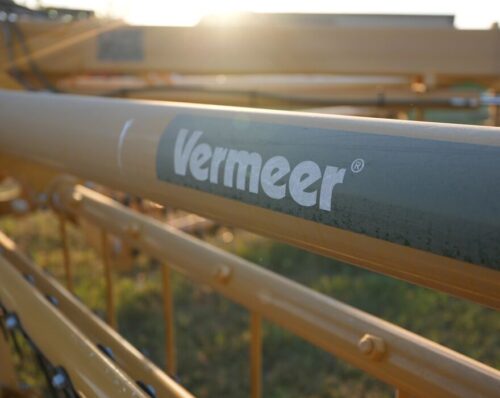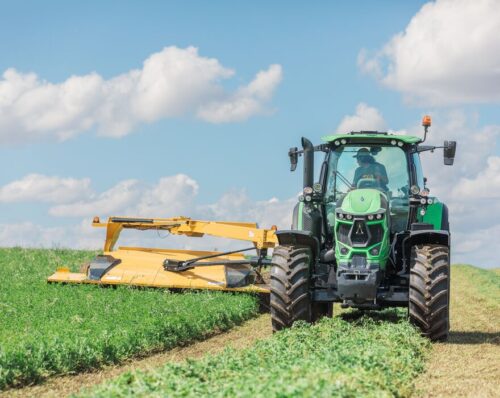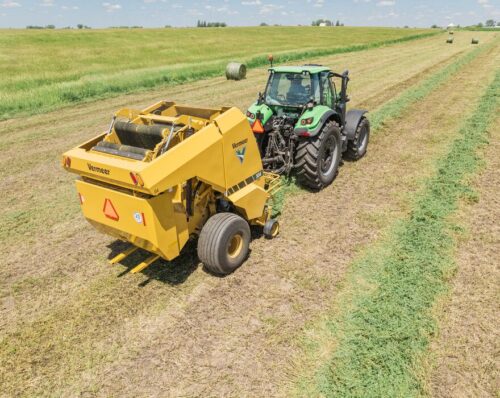
Is it trade-in time for your forage lineup?
May 2020
These factors can help determine if it’s a good time for a new hay tool.
There’s usually two types of hay and forage producers. First are those who want the highest performance from their equipment and trade regularly to sustain it. Others are price shoppers who aren’t afraid to take on the maintenance and upkeep that older, higher-use equipment often requires, and still others find themselves trading based on necessity.
So in a marketplace filled with a variety of available machine upgrades, how do you know the best time to trade in your baler or other hay and forage tools? Start by asking what type of business manager you are. Which of the above personas, those who trade regularly or those who do not, best describes you and your operation? Here are four other factors to consider when making the right forage equipment trade-in decision.
- Cyclical trades
The operators who keep comprehensive records may know well in advance when the optimal time frame is to trade in their existing baler, but the factors to do so will vary among them. Operation size is one factor. A large custom hay producer, for example, will use a baler a lot more in one year and will account for operating costs differently than a cow/calf producer who puts up a smaller number of bales for his or her own herd. Given the annual bale count, a one- or two-year trade-in cycle is much more common for a large operator.
“A strong custom hay operator will put 10,000 bales through a baler in a year, so they’ll be much more apt to trade that baler every year or every other year than the producer who is putting up a few bales here and there for his or her own cows,” according to Moving Iron LLC President and farm machinery expert Casey Seymour.
"Many customers trade on a cycle, whether it’s based on a number of years, specific bale count or a specific financial reason — like taxes — for making the decision."On the other hand, “Many customers trade on a cycle, whether it’s based on a number of years, specific bale count or a specific financial reason — like taxes — for making the decision,” according to Craig Eubanks, Vermeer dealer and co-owner of Eubanks Equipment in Welch, Oklahoma. “Then, there are those who are reactive; they don’t trade until circumstances necessitate it, like changing or increasing production or an untimely, costly maintenance issue.”
More proactive operators and managers will also account for how other variables — like depreciation and residual equipment values — influence long-term trade-in decisions. “I think there’s a good portion of operators who understand their specific operating costs after they’ve used a piece of equipment for a specific number of hours,” said Seymour. “There are some producers who know those costs down to the bale or bushel.”
- Residual value
Preferred residual value at trade-in time is another variable to consider in identifying an operator’s optimal time to trade. On paper, that value depends on the machine’s age and use over time. Typically, the 10,000-bale count represents an operational plateau that facilitates a trade-in, much like when an automobile hits the 100,000-mile mark. Machines with this level of use on them are usually worth around 65% of new retail price. The next plateau is around 25,000 bales. At that point, a baler’s resale value is around 35% to 40% of a new machine. Psychology in how these numbers are viewed plays a role in the value of a trade-in, Eubanks added. “There’s usually no difference between a baler with 9,500 bales on it and one with 10,000 bales on it. But they create different perceptions of value on the resale side,” he said. “It’s a mental thing.”

Additionally, operators who are harder on their equipment than others will encounter different residual values and ideal trade-in time. Eubanks likens it to two pickups with identical mileage, only one is 10 years old and has been used to feed cattle, while the other is only two years old and has been driven primarily on the highway. Though they have similar mileage, the latter is worth well more than the former because of its use, so it will have a higher value as a trade-in and could influence when the owner trades it in.
"If the previous owner did not run the baler into the ground and has all the service records to back up its care, that machine has a lot more trade-in value."“There’s a lot of variability in the value of a baler on the used side, and that makes owner care or environment a factor to consider,” he said. “If the previous owner did not run the baler into the ground and has all the service records to back up its care, that machine has a lot more trade-in value.”
- Hay prices and health of the market
Local forage market conditions contribute to an informed trade-in decision. The forage marketplace is highly localized and prices are often dictated largely by local supply and demand. The forage equipment market is the same way; in years of tight hay supply and high prices, producers may be more likely to trade in equipment earlier than normal, while times of low hay demand and prices may lead many to hold off on trading balers, for example.
“The baler market is driven by what the actual commodity price is more than any other machinery segment,” Seymour said. “Someone may choose to run a baler a little longer and spend money on maintenance if the hay price is lower, but if the hay price is high, you’ll see people trading in and upgrading way more. It’s all about cash flow.”
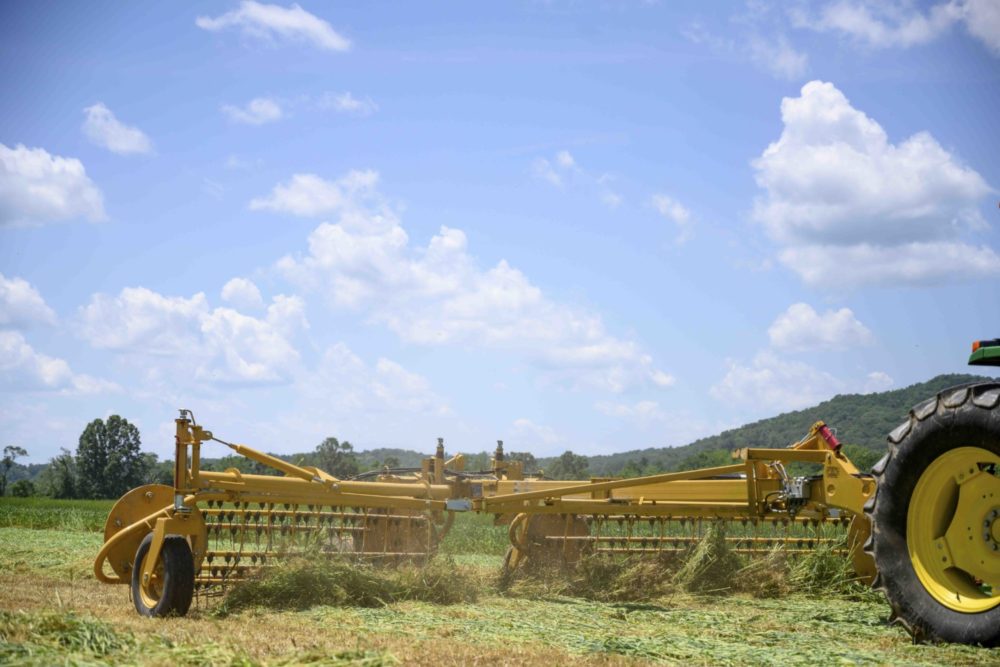
“When cattle prices go up, so do prices for large balers,” Seymour said.
- Maintenance/reconditioning costs
No machine will last forever, and as they age, equipment like balers will cause owners to incur more maintenance costs. The increasing amount required to keep an older machine operating may increase overall costs and justify a trade-in.
Seymour recommends comparing maintenance and reconditioning costs to a year of depreciation in determining whether it’s time to trade in a baler or put off the decision another year. “The customer should ask, ‘If I can fix it, run it one more year and there’s a little more return from the hay output, will I get my money back?’” he said. If the answer is yes, and the residual value won’t fall that much in that year, the machine’s overall value will still be higher. However, if that residual value does end up lower than returns in operating the baler one more season, it’s a sign the timing is right for a trade.
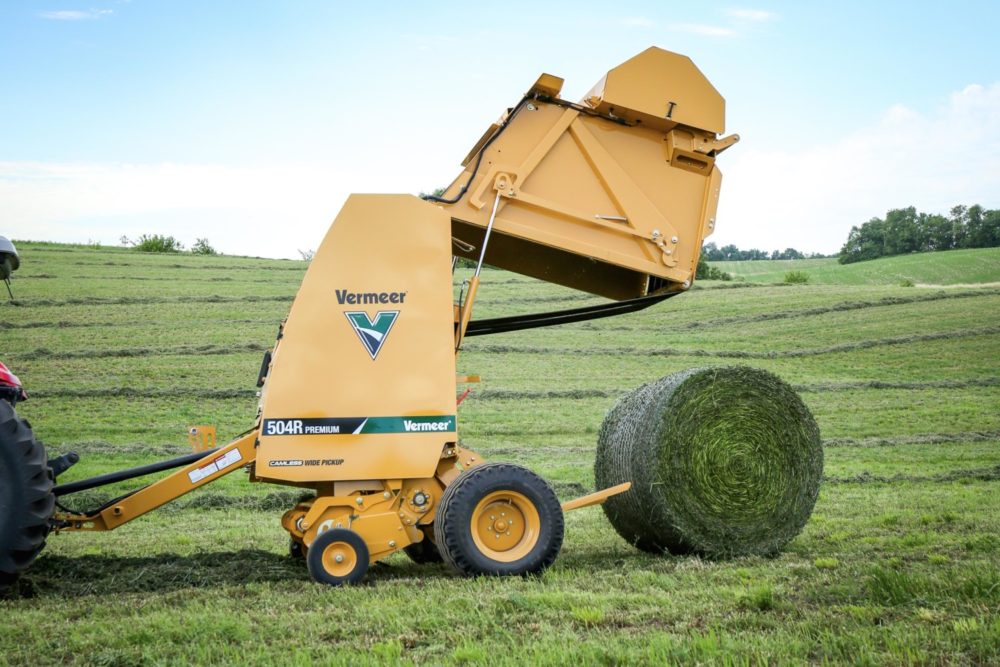
After you’ve considered these factors, it’s best to work with a trusted advisor or dealer to determine whether they add up to an imminent hay equipment trade-in. In addition to helping you make an informed decision on when to trade in your existing baler, mower or other forage equipment, it can help you determine which upgrades will be the most cost-effective to seek in the trade-in process based on how you cared for your latest hay tool.
“Ask your dealer some key questions about maintenance, how the machines have been evaluated and what specific features you want. Some areas will have customers who only want net wrap or a specific size of baler, for example, so that can affect trade-in value,” Eubanks said. “I sit down with customers, evaluate where they’re at today and where they’ll be by the next season if they trade and if they don’t trade. Think about the other factors like taxes that can influence your decision, too. It’s all about doing that fact-finding early in the process so that you get exactly what you need. You don’t want to get into a new baler if it’s something you’re not going to be happy with three months later.”
The element of time and involving all of the farm stakeholders is also crucial to making a good decision to trade or not. Take your time and weigh all of your options with those involved in the business.
“Rarely is there only one decision-maker in a forage business. There’s often a family dynamic, with the whole family unit making the trade-in decision,” according to Eric Woodford, owner of Woodford Equipment in Emmetsburg, Iowa. “As a dealer, we want to plant the seed and enable the family operator to discuss it all together and determine if now is the right time to trade.”
***
Information noted above was gathered from a third party who was advised his/her experience might be featured in marketing materials. This article contains third-party observations, advice or experiences that do not necessarily reflect the opinions of Vermeer Corporation, its affiliates or its dealers. Individual results may vary based on care and operation of machine and crop and field conditions, which may adversely affect performance. Vermeer Corporation reserves the right to make changes in engineering, design and specifications; add improvements; or discontinue manufacturing at any time without notice or obligation. Equipment shown is for illustrative purposes only and may display optional accessories or components specific to their global region. Please contact your local Vermeer dealer for more information on machine specifications. Vermeer and the Vermeer logo are trademarks of Vermeer Manufacturing Company in the U.S. and/or other countries. © 2020 Vermeer Corporation. All Rights Reserved.



